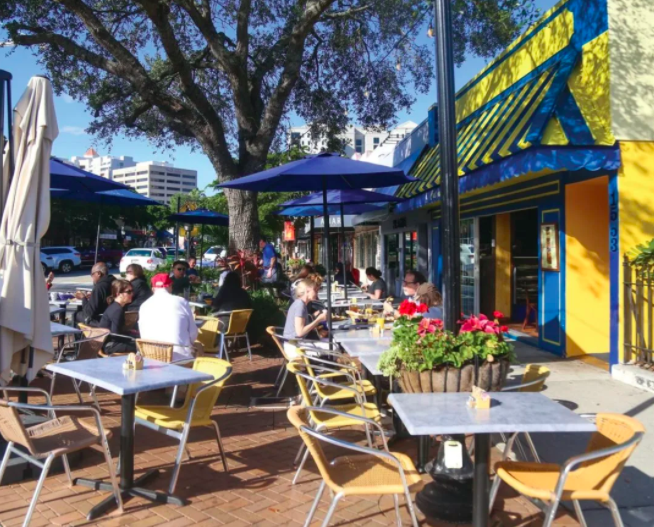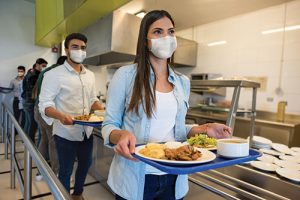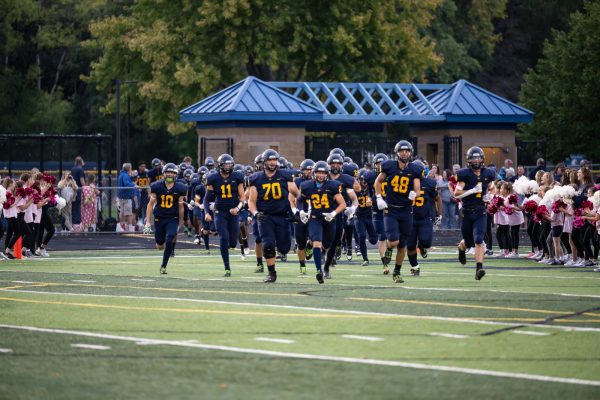Local Restaurants Rethink Outdoor Dining
Cool weather impacting decisions
October 26, 2020
Local restaurants will suffer even more as the weather turns cooler and outdoor dining is no longer an option. Following the worldwide coronavirus shut down in March of 2020, the restaurant business took a major plummet. As customers stopped eating out, many restaurants resorted to patio dining and takeout.
However, as Minnesota’s weather quickly becomes colder, these restaurants will no longer have the option of outdoor dining for customers.
For numerous restaurant owners in Minnesota, fear of irreversible harm to their business remains. According to the National Restaurant Association’s 4,000-operator study, 3% of country-wide restaurants were forced to shut down for good in one month alone. A lot needs to be done for these businesses to overcome major challenges.
“Restaurants are designed to run near maximum capacity. Being at 50% capacity prevents them from being profitable unless a restaurant is able to find alternative income streams,” says Dennis Sundlie, a regional sales manager for a broadline service distributor. “Many restaurants are trying to reimagine themselves by creating a diverse takeout and to-go menu offering.”
While takeout is not as beneficial as indoor dining, customers are still able to support local restaurants by choosing the to-go method. “Takeout has fewer labor costs to pay because it is not being served in the restaurant. However, disposable packaging can be expensive,” he adds. In addition, most services like DoorDash and Grubhub make a significant amount of profit.
On the other hand, fear remains evident for numerous customers who worry about their health during the pandemic. So what can restaurants do to ensure their customers’ safety?
In the kitchen, employees must wear facial coverings and gloves, and they must pass a temperature check at the start of their shift. According to Sundlie, “18-hour contact tracing for employees and customers is used, in the event, someone is diagnosed with COVID-19.”

In addition to employee protocols, many restaurants require temperature scans of customers upon entry. All restaurants must provide hand sanitizer for patrons, as well as provide proper social distancing guidelines. “If any restaurant wants to stay in business and provide their customers with safety, they must follow these precautions,” adds Sundlie.
Minnesota restaurants plan on continuing outdoor dining. However, cold weather Minnesota will make it impossible to eat outdoors. According to Restaurant Business Online, a restaurant in San Francisco has started adding blankets for comfort, greenery to serve as a shield from wind, and redesigning menus to add warm meats and cocktails to help customers warm up.
So if restaurants are limited in space, what will it mean for their long-term viability? “Every restaurant is going to be different, but for many, their success depends on being near full capacity,” says Sundlie. “Restaurants that are able to adapt by finding additional revenue streams will have the best chance for long-term survival.”
For example, some restaurants have chosen to keep their doors closed, eliminating labor and other costs. They are instead operating a ghost kitchen, offering extensive takeout and delivery options, often under different restaurant names. “These restaurant names are not real restaurants and exist by name only – hence the name ghost kitchen,” says Sundlie.
Restaurants are becoming better at maximizing their given space. Furthermore, they have adopted better sanitation practices in order to provide the safest experiences for their guests. By following these guidelines and tips, restaurant owners are hoping they will remain successful through the winter.















